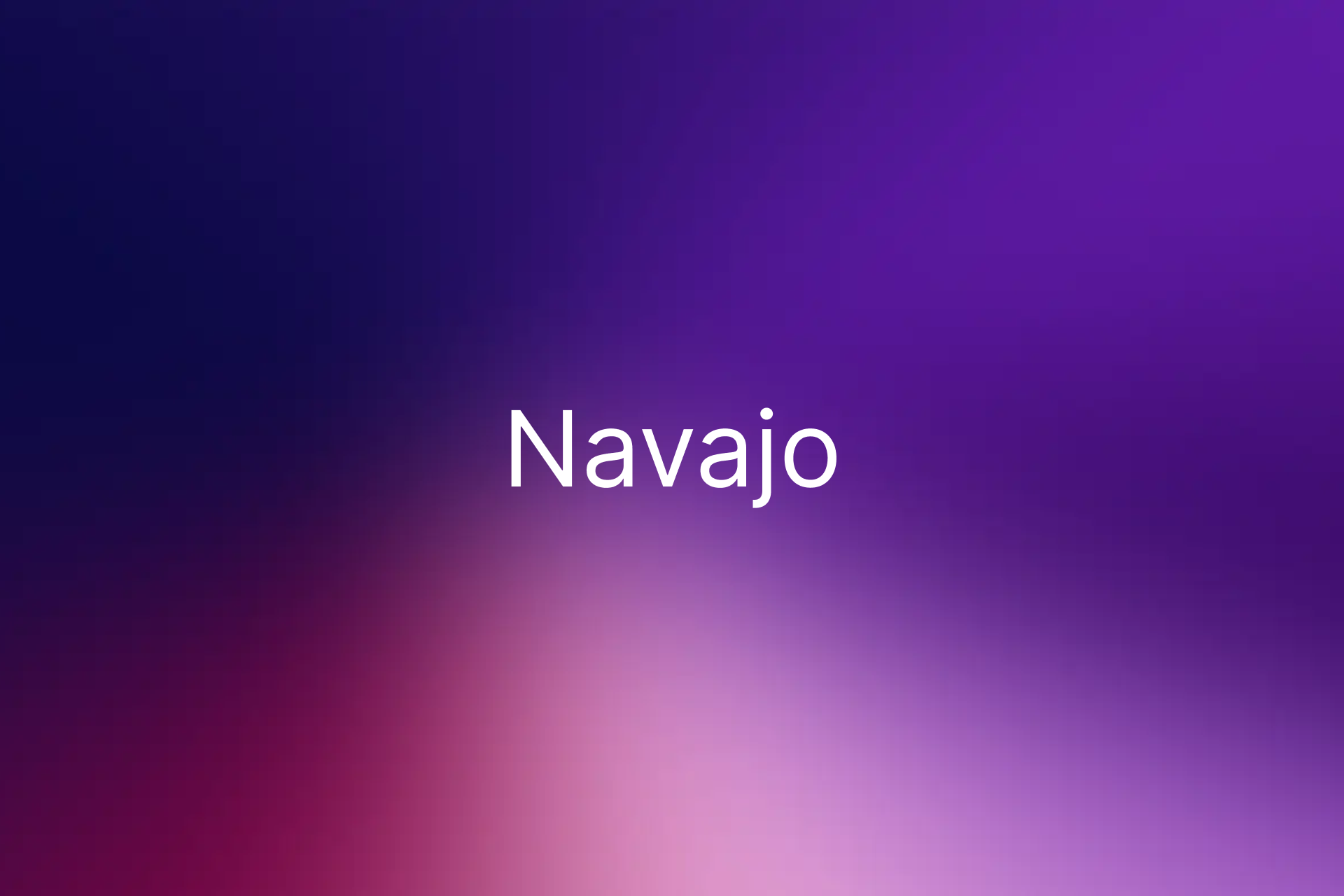Exploring the Navajo Language: A Deep Dive into Diné Bizaad

TABLE OF CONTENTS
The Navajo language, known as Diné Bizaad, is a cornerstone of Navajo culture and one of the most widely spoken Native American languages in the United States, with approximately 170,000 speakers as of 2025. Rooted in the Southwestern Navajo Nation, this Southern Athabaskan language is both a linguistic marvel and a cultural treasure. However, it faces endangerment due to declining use among younger generations. This comprehensive guide delves into the language’s linguistic features, cultural significance, current challenges, and preservation efforts, offering readers an engaging journey enriched with interactive elements and authoritative resources, including tools like OpenL Translate to explore Navajo further.
Linguistic Features: A Complex and Expressive System
Navajo’s linguistic structure is renowned for its complexity and precision, setting it apart from many world languages:
-
Phonology: Navajo boasts a rich consonant inventory, including ejective stops ([kʼ], [tʼ], [tsʼ])—sounds produced with a burst of air from the glottis, absent in English. It is also a tonal language, where pitch alters meaning. For example, azeeʼ (with low tones on both syllables) means “mouth,” while azééʼ (with a low tone on the first syllable and a high tone on the second) means “medicine” (Wikipedia). Vowels vary by length, nasality, and tone, adding layers of nuance (Faltz, 1998).
-
Grammar: Navajo is highly synthetic, with verbs carrying extensive information through prefixes and suffixes. Navajo verbs incorporate prefixes to denote subject, object, tense, aspect, mood, and more, creating highly specific meanings. A single verb can encode subject, object, tense, aspect, and manner. For instance, the verb for “run” can specify “one person running on flat ground” (áshdlééh) or “two people running uphill” (ádááshdlééh) (MustGo). This allows for remarkable expressiveness but poses challenges for learners.
-
Orthography: Developed in the 1930s, Navajo uses a Latin-based script with diacritics, such as [ʼ] for ejectives and [á] for high tones. Its standardized alphabet ensures accurate written representation, though oral tradition remains dominant (Britannica).
These features make Navajo a fascinating subject for linguists and learners, offering a window into a highly structured yet flexible system.
Cultural Significance: The Heart of Navajo Identity
Diné Bizaad is inseparable from Navajo culture, serving as a vessel for tradition, spirituality, and history:
-
Ceremonial Role: The language is central to sacred rituals like the Blessing Way, a ceremony to restore harmony (hózhó), and daily practices such as building a hogán (traditional dwelling) or planting crops, each accompanied by songs and prayers (Navajo People). Specific kinship terms, like k’é for familial relationships, reflect Navajo social structures (Native-Languages.org).
-
Historical Impact: During World War II, Navajo Code Talkers used the language’s complexity to create an unbreakable code, aiding Allied victories. This contribution elevated Navajo’s global recognition and underscored its strategic value (Britannica).
-
Identity and Expression: Navajo’s vocabulary, rich in descriptive terms for nature and relationships, embodies the Navajo worldview. The use of the “fourth person” pronoun for polite or indefinite reference highlights cultural nuances of respect (Faltz, 1998).
The language is not merely a communication tool but a living archive of Navajo heritage.
Current Status: Challenges and Preservation Efforts
Despite its speaker base, Navajo is classified as endangered:
-
Declining Usage: U.S. Census data (2010) illustrated this shift, showing that 51% of Navajo people spoke the language, a decrease from 93% in 1980 (U.S. Census Bureau). While more recent comprehensive census-style data on intra-community usage percentages can be slow to update, the trend of declining use among younger generations due to urbanization and English dominance in schools and homes has been consistently observed (Ethnologue).
-
Preservation Initiatives: The Navajo Nation has designated Navajo as its official language, integrating it into governance and education (Navajo Nation Government). Immersion schools, such as those supported by the Navajo Language Academy, teach children in Navajo, fostering fluency (Navajo Language Academy). Innovative projects, like dubbing Star Wars into Navajo, engage younger audiences (K-5 Impact News).
-
Technological Support: Digital tools are bridging gaps. For example, OpenL Translate offers AI-driven Navajo translation, enabling users to explore the language through text, documents, and more, supporting both learners and preservation efforts.
These efforts reflect a resilient commitment to sustaining Diné Bizaad for future generations.
Interactive Engagement: Connect with Navajo
To deepen your connection with Navajo, try this interactive quiz:
Match the Navajo phrases to their English meanings:
| Navajo Phrase | English Meaning Options |
|---|---|
| Yá’át’ééh | A. Thank you |
| Ahéhee’ | B. Hello |
| Hágoónee’ | C. Goodbye |
Answers: Yá’át’ééh – B, Ahéhee’ – A, Hágoónee’ – C (Omniglot).
Share your results in the comments! Have you encountered Navajo culture before, or are you inspired to learn a phrase? Your thoughts can spark meaningful discussions.
Resources for Further Exploration
Dive deeper into Diné Bizaad with these carefully curated resources:
-
Learning and Preservation:
-
Navajo Language Academy: Offers courses, workshops, and linguistic resources for learners of all levels.
-
Navajo Nation Government: Details language preservation policies and community initiatives.
-
YouTube Channels (e.g., “Learn Navajo”): Provides free video lessons on pronunciation and basic phrases.
-
Native-Languages.org: Features vocabulary lists, pronunciation guides, and cultural context.
-
-
Translation Tools:
-
OpenL Translate: An AI-powered tool for Navajo translation, supporting text, documents, and more, ideal for learners and professionals.
-
Glosbe: An English-Navajo dictionary with example sentences for quick reference.
-
Translation Services USA: Professional translation services for accurate, culturally sensitive work.
-
Musely.ai: A free AI tool emphasizing cultural authenticity in Navajo translations.
-
These resources empower readers to engage with Navajo actively, whether through learning, translation, or cultural exploration.
Conclusion: Preserving a Cultural Legacy
Diné Bizaad is more than a language—it’s a testament to Navajo resilience, ingenuity, and cultural depth. While it faces challenges from linguistic assimilation, the Navajo Nation’s dedication to preservation, coupled with emerging digital tools and community efforts, offers hope for its revitalization. By exploring Navajo’s linguistic beauty and cultural significance, we can contribute to its legacy. Try the quiz, explore the resources, and share your journey in the comments—let’s celebrate and support this remarkable language together.
Key Facts Summary
| Aspect | Details |
|---|---|
| Speakers (2025) | ~170,000 (Ethnologue) |
| Region | Navajo Nation (AZ, NM, UT) |
| Language Family | Southern Athabaskan, Na-Dené |
| Unique Features | Tonal, ejective consonants, complex verb morphology |
| Endangered Status | Yes, due to English dominance (U.S. Census Bureau) |
| Preservation Efforts | Immersion schools, official language status, digital tools (Navajo Nation Government) |
Interactive Phrase Table
| Navajo Phrase | English Meaning |
|---|---|
| Yá’át’ééh | Hello |
| Ahéhee’ | Thank you |
| Hágoónee’ | Goodbye |
| Aooí | Yes |
| Dooda | No |


